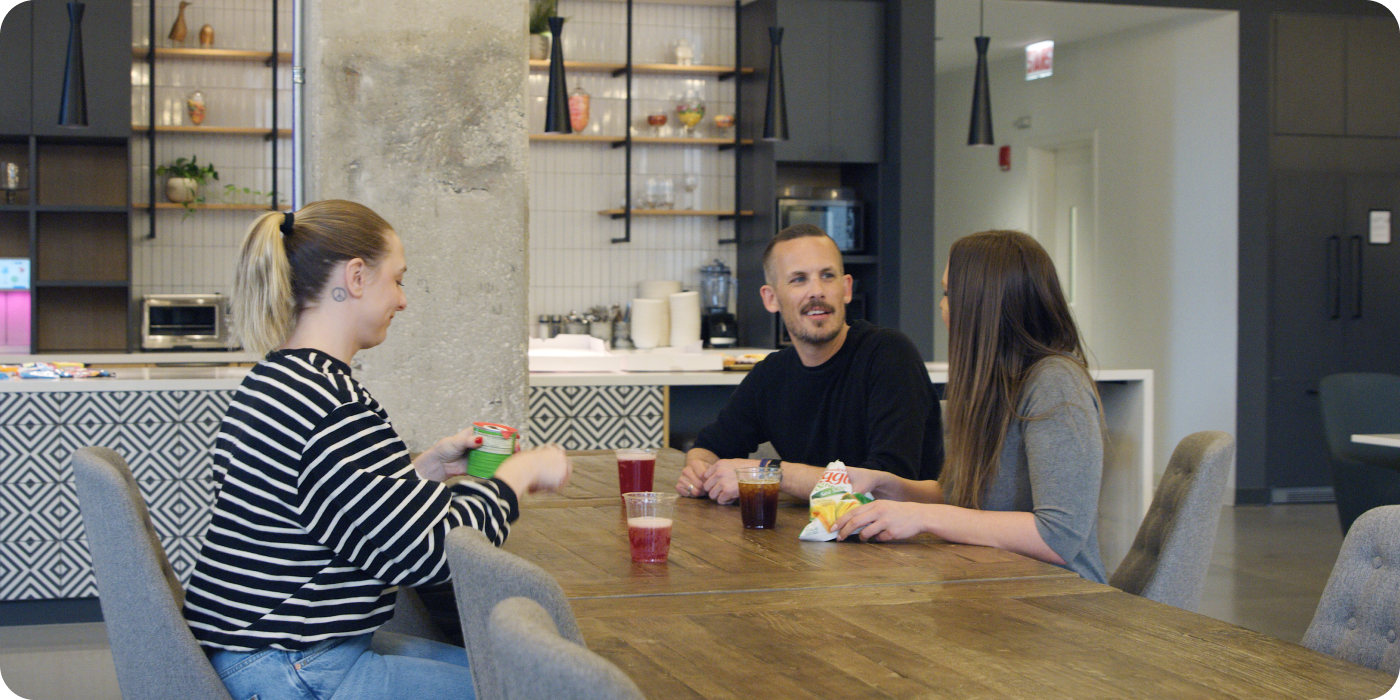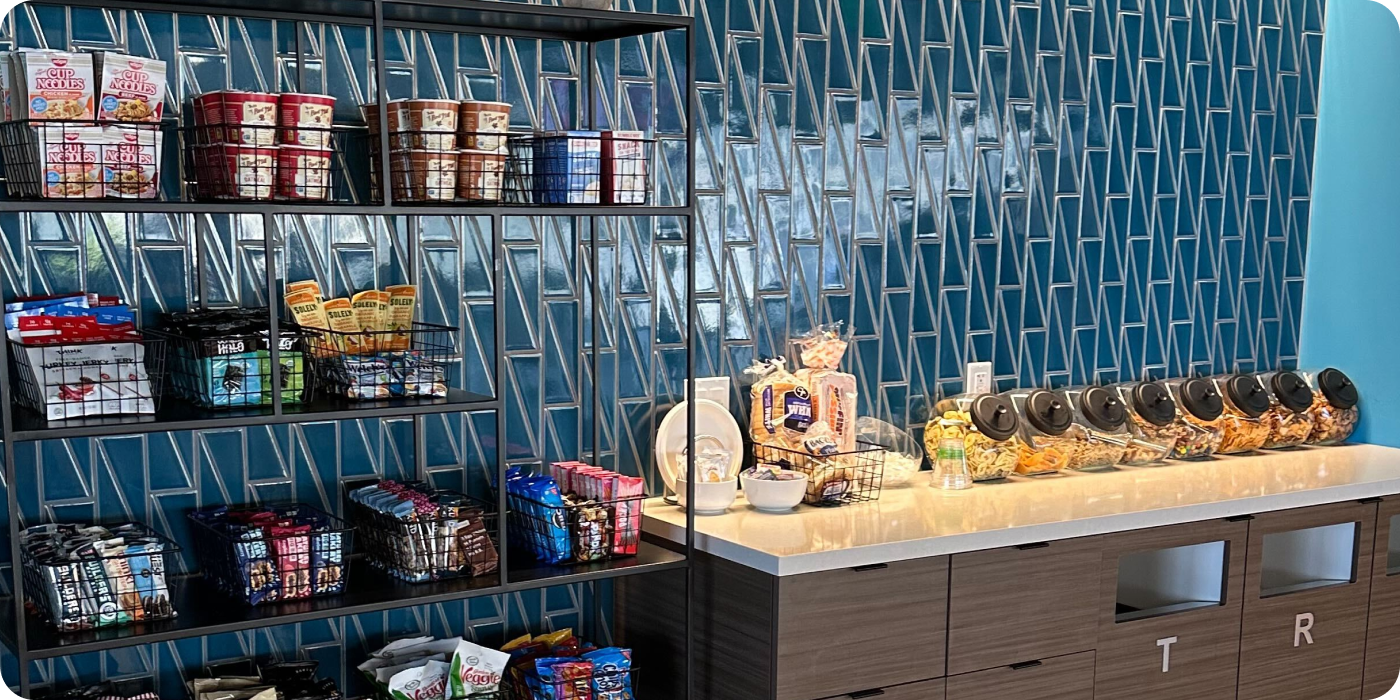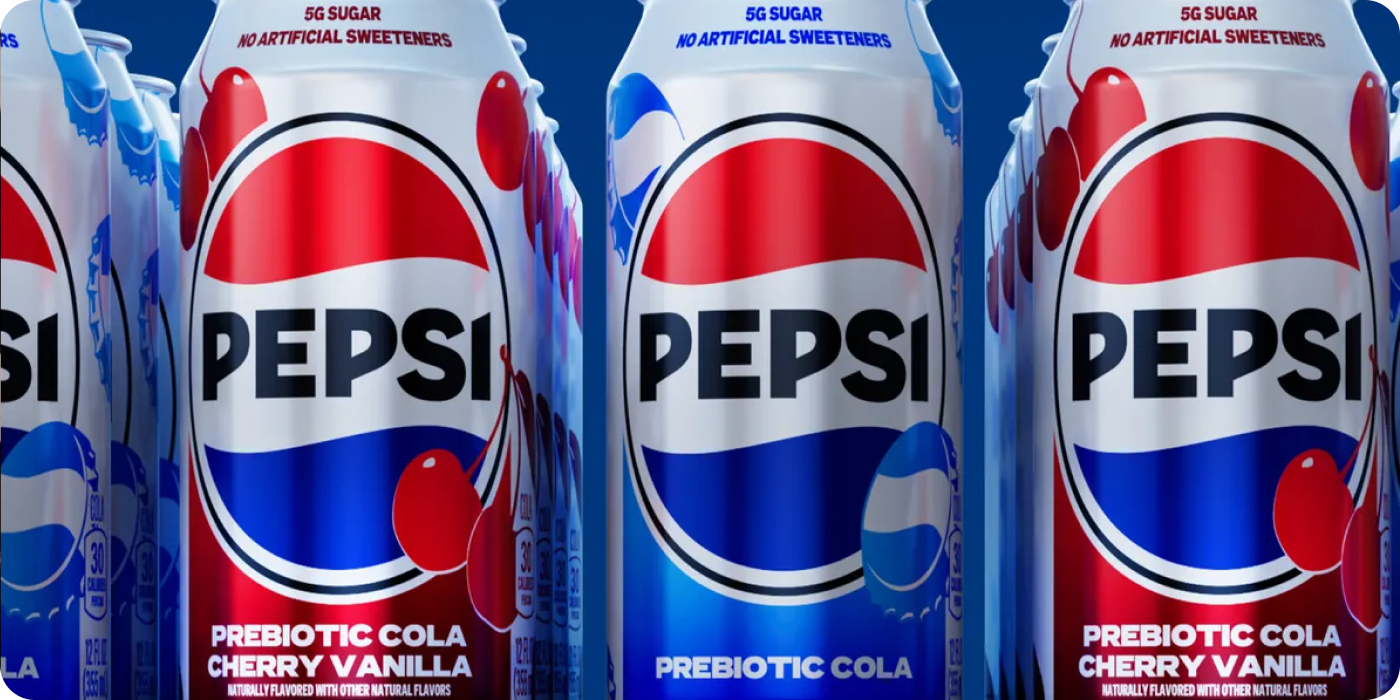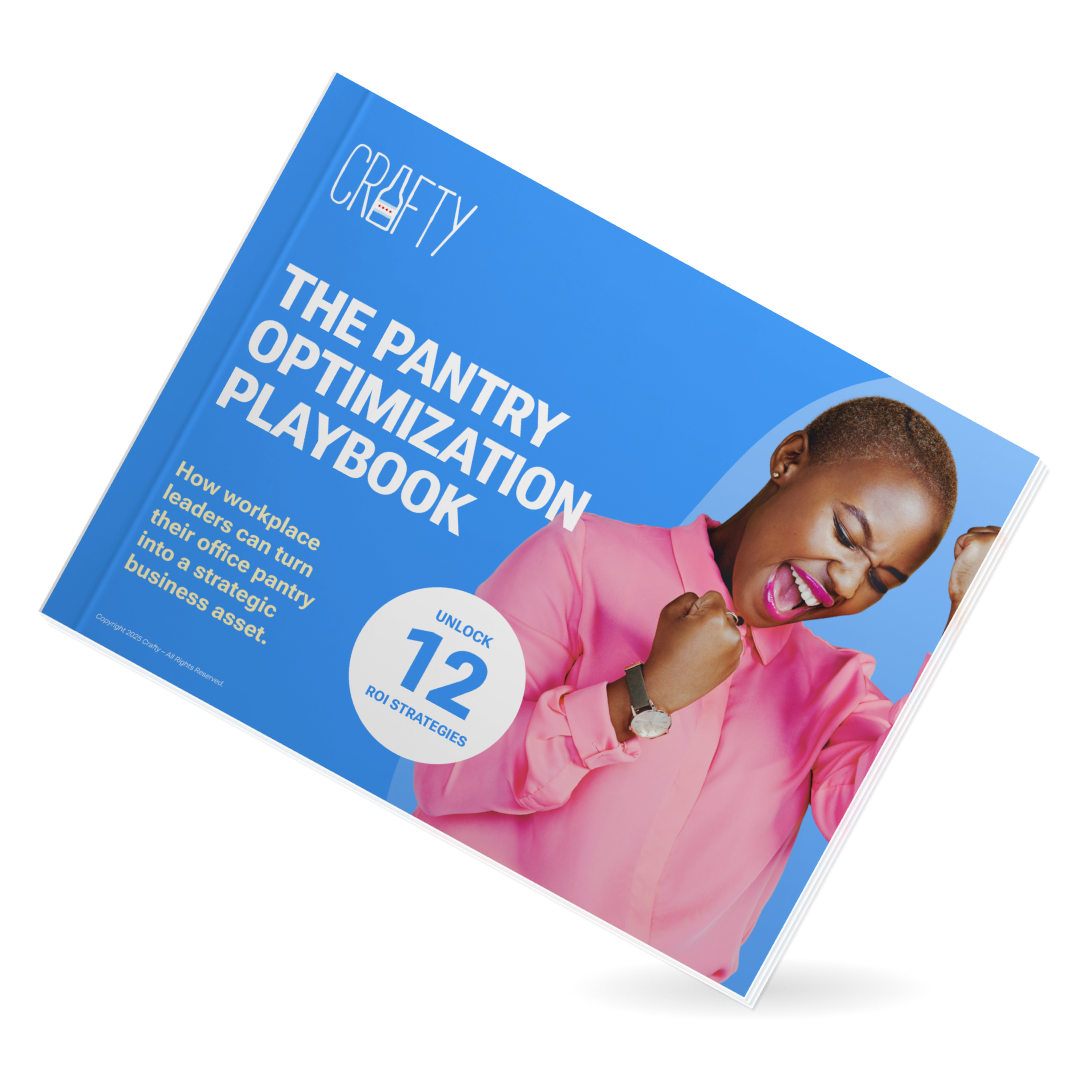August Workplace Insights: Food Perks, Tax Shifts, and the Wellness Wave
How food perks reshape workplace strategies in a cost-conscious, experience-driven world.
✍️ Written by Rebecca Ross
🕚 8-Minute Read • Updated Thursday, July 31, 2025
![Trends for your corporate food service [August 2025] Trends for your corporate food service [August 2025]](https://info.craftydelivers.com/hubfs/Trends%20for%20your%20corporate%20food%20service%20%5BAugust%202025%5D.png)
Workplaces are at a pivotal crossroads, where benefits like PTO and remote flexibility are no longer the most important things employees care about. This month’s top workplace trends underscore just how central food and beverage programs have become. In a high-cost economy where employee expectations are rapidly evolving, office pantry programs offer a powerful lever to attract talent, deliver value, and support holistic wellbeing that builds loyalty.
From a striking shift in benefit preferences to a change in the tax code and a major brand’s wellness-forward pivot, the message for workplace teams is clear: success depends on listening to market signals, having clear visibility into your pantry program, and being agile enough to evolve. When you understand your team's values and track what drives impact, you can build a pantry program that fuels focus, fosters connection, and delivers lasting ROI.
Food Perks Outrank PTO in ezCater's Latest Report
Nearly half of employees say they’d choose food perks over PTO.

According to ezCater’s 2025 Future of Workplace Experience Report, food perks are now the #1 most desired workplace benefit, outpacing vacation time, wellness stipends, and even flexible work hours. When asked to choose the one amenity that would convince them to return to the office more frequently, 28% of remote and hybrid Gen Z workers chose food-related perks, making it their top motivator.
Employees, especially younger ones, are recalibrating what they need from the office. With inflation still biting and grocery prices up 23% over five years, food perks are doing more than feeding cravings; they’re easing everyday financial strain, reducing decision fatigue, and offering a sense of care.
Let’s break down the why behind the demand:
- Cost of living relief: With rising food costs, on-site snacks and beverages have become a subtle but meaningful compensation layer.
- Mental energy support: Avoiding the “What should I eat?” dilemma conserves cognitive bandwidth, helping employees stay focused.
- Culture connection: Whether it’s chatting over cold brew or bumping into someone at the snack bar, the pantry is becoming a social node that reinforces belonging.
This is especially powerful for Gen Z and millennials, according to ezCater, who are 46% more likely than older generations to say they want more food-related perks. They’re also more likely to associate food perks with a better workplace experience, and they’re watching whether their employer is tuned in.
The tea: If food perks are what’s getting people in the door, visibility and reliability are what keep them coming back. That’s where many programs fall short.
Too often, companies launch pantry programs based on vibes alone—and it shows. Without the right tools, they don’t know what’s working and what’s not. That leads to two major problems: pantry experiences employees don’t value, and bloated spend that’s hard to justify.
Let’s be clear: we’re not just talking about asking your team what they want. What people say and what they do? Totally different. Someone may tell you they want healthier soda alternatives, but the moment you pull Diet Coke from the fridge, you’ll hear about it in Slack. The gap between stated preferences and real consumption is one of the biggest reasons pantry programs fail to resonate.
That’s why clear, bottom-up visibility isn’t optional; it’s essential. Success starts by knowing exactly what’s happening at every level of your program, so you can evolve it with intention.
Here’s what that looks like in a well-run, data-driven pantry:
- Order-Level Reporting: Did what you ordered even arrive? This is step one, and it’s where most teams stumble. Without confirmation and reconciliation, you’re building assumptions on shaky ground. You can’t optimize what you think is there—you have to know.
- Product Performance Insights: Which products are flying off the shelves, and which are sitting untouched week after week? You need the ability to zoom in and identify what’s resonating so you can fine-tune in real time.
- Easy Improvements Rooted in Data: Real agility comes from systems that empower action. Think quick-edit tools to adjust order quantities and AI-powered product swap recommendations aligned to your goals, whether it’s cutting sugar, saving money, rotating for seasonality, or sourcing more local favorites.
- Category & Subcategory-Level Reporting: You also need a higher-level lens. Are sparkling waters flying, but protein bars stagnating? What snack types are overrepresented? Visibility at the category level lets you spot gaps, balance variety, and invest where it matters most.
- Budget-to-Spend Tracking: Ultimately, you need a clear understanding of the big picture. Are you pacing toward your spend targets? Are there areas of over- or under-investment? When you can see the financial landscape in real time, you can prioritize with confidence and course-correct before surprises hit.
Crafty’s platform was built around this exact model because we’ve seen how the best workplace teams operate. They aren’t just curating a snack shelf; they’re managing a strategic benefit with the same rigor they apply to everything else in your business.
When you layer food perks with real visibility and seamless improvement tools, your pantry becomes more than a fridge full of LaCroix; it becomes a dynamic program that grows smarter, leaner, and more loved over time.
UNLOCK MORE ROI FROM YOUR PANTRY
This playbook outlines 12 proven strategies to create efficiencies, reduce waste, maximize spend, and drive a quality experience that accelerates your organization.
Top Companies Are Turning Tax Change Into Workplace Advantage
Big tax changes are coming in 2026, and smart companies are already adapting.

Starting January 1, 2026, pantry staples like snacks, coffee, and catered meals will no longer be tax-deductible under Section 112024 of the One Big Beautiful Bill. While operational items like paper towels and soap still qualify, office food and beverage programs are officially under new financial scrutiny.
On the surface, it might seem like a dry accounting update. But for workplace and finance leaders, this is a strategic reset and a signal to get serious about how food perks are managed, reported, and justified.
This isn’t just about staying compliant; it’s about protecting one of your most visible, valuable workplace investments. What’s changing is the tax treatment. What’s not changing is the employee demand, cultural impact, and business value of your pantry program.
Let’s break down why the shift matters:
- The tax deduction is disappearing, but expectations aren’t. Employees still want snacks, and employers still need to attract top talent and support in-office engagement.
- Invoice-level reporting won’t cut it anymore. Starting in 2026, companies must split food and supply spend precisely to remain compliant and avoid overpaying or underreporting.
- Programs that aren’t optimized will be the first to face cuts. Without clear visibility into what’s working, it’s hard to defend pantry budgets in a more cost-conscious environment.
- The workplace is still a strategic asset. Amenities like pantries increase space utilization, boost real estate value, and serve as a powerful point of leverage with property owners.
Some publications are declaring the “end of free office snacks,” but the companies leading in talent, performance, innovation, and profits aren’t cutting perks—they’re doubling down on programs that matter and building smarter systems to support them.
The tea: Snacks are far from dead. The bar for value is higher than ever before, and the companies that will win in 2026 are doubling down. As companies invest more in AI, high-performing talent, and snacks are becoming one of the most valuable tools for supporting performance, culture, and retention.
We’re watching a major talent shift unfold. Tech workers, especially engineers, data scientists, and product specialists, are leaving traditional tech companies and jumping into financial services, fintech, and consumer goods, where the demand for AI capability is surging. Why? Because these industries aren’t just adopting AI tools; they’re baking them into their core business strategies across a variety of functions.
But attracting that talent requires more than a compelling job description and a competitive salary. It requires delivering a workplace experience that feels familiar, competitive, and high-functioning—and that includes a smart, well-stocked pantry program. That's why we're seeing pantry spend rise 13% year-over-year and 8.4% quarter-over-quarter.
From our Q2 2025 Pantry Benchmarks, here’s what the data shows:
- Fintech companies spent $25,945/month per office, with protein-packed snacks and premium beverages leading the charge.
- Financial services offices averaged $20,150/month, focusing on pantry staples that support high-focus, long-day work cultures.
- Consumer goods organizations hit $20,521/month, prioritizing fresh, functional items aligned with employee wellness goals.
And while these companies are investing more in snacks, they’re not doing it blindly. From the start, they’ve built smarter, more efficient programs designed to withstand scrutiny, support scale, and deliver measurable value.
Think about it: these are financial institutions, data-driven retailers, and high-growth fintechs. They’re numbers people. They know exactly what a lack of visibility can cost, and they didn’t wait for a tax law to tell them to get serious.
They invested early in the systems, tools, and reporting frameworks that make pantry programs efficient by design. That means no scrambling to retroactively tag line items or guess at consumption patterns. No surprise budget overruns or subjective product picks. Just real-time clarity and control.
And now, as the rest of the market scrambles to catch up, they’re already ahead. Their pantry has proven to be a strategic advantage in the age of AI, talent scarcity, and economic pressure.
Pepsi Throws Its Blue Can Into the Wellness Ring
Pepsi is getting a gut check with its new prebiotic soda.

PepsiCo is launching Pepsi Prebiotic Cola—a new, better-for-you soda designed to meet rising demand for health-conscious beverages. Available online this fall and hitting store shelves in early 2026, the new line will debut in two flavors: Classic Cola and Cherry Vanilla.
Each can contains:
- 3g of prebiotic fiber (more than Poppi)
- 5g of cane sugar
- 30 calories
- No artificial sweeteners
So why the pivot? This follows PepsiCo’s recent $2 billion acquisition of Poppi, a move that gave the beverage giant an instant foothold in the wellness soda market. According to PepsiCo, this is about winning back health-conscious consumers, especially younger drinkers, who have migrated to brands like Poppi for their gut health benefits and cleaner ingredient labels.
The move also aligns with a broader industry shift. Coca-Cola recently released its own prebiotic soda under the Simply brand, and other national initiatives are pressuring food and beverage companies to improve nutritional offerings. With soda consumption dropping—traditional cola frequency has declined from 9.4 to 7.7 times per month—legacy brands like Pepsi are being forced to innovate or risk irrelevance.
The tea: Employees, especially Gen Z and younger millennials, are gravitating toward beverages that do more than quench thirst. They’re looking for ingredients that support digestion, focus, and overall wellbeing. And in the workplace, those expectations don’t pause at the office door.
But that doesn’t mean you need to overhaul your entire beverage lineup overnight. The smartest pantry programs introduce wellness-forward products strategically, not reactively.
Here’s how to approach it:
- Start small. Don’t rip out your soda shelf just yet, since our data shows soda is on the rise. Add one or two gut-friendly items to start.
- Watch behavior, not buzz. Just because people say they want healthier options doesn’t mean they’ll grab them daily. Pay attention to what actually moves.
- Keep core comforts. The key isn’t to replace Diet Coke; it’s to offer alternatives that can stand beside it.
- Message the why. Promote the new item in Slack to show that it's there and why it’s there. That builds awareness and invites low-pressure experimentation.
Testing products, whether it's Olipop, Poppi, or eventually Pepsi's Prebiotic Cola, in your pantry is about staying in sync with employee needs as they evolve. Because when your beverage mix reflects how your team lives outside of work, the office starts to feel more intentional, supportive, and worth showing up for.
Conclusion
What sets leading companies apart isn’t how much they spend, but how wisely they manage it. They’re using their pantry to deliver meaningful value in a high-cost economy, to signal care and consistency, and to stay one step ahead of what their teams need before they ask for it.
Whether it’s choosing snacks that offset daily expenses, building a tax-compliant program that still supports culture, or introducing functional drinks that reflect modern routines, success comes down to this: listen, measure, and evolve.
The best pantry programs aren’t the biggest. They’re the most intentional. And when your pantry is powered by real insights, not assumptions, it becomes more than just a benefit—it becomes a business advantage.



